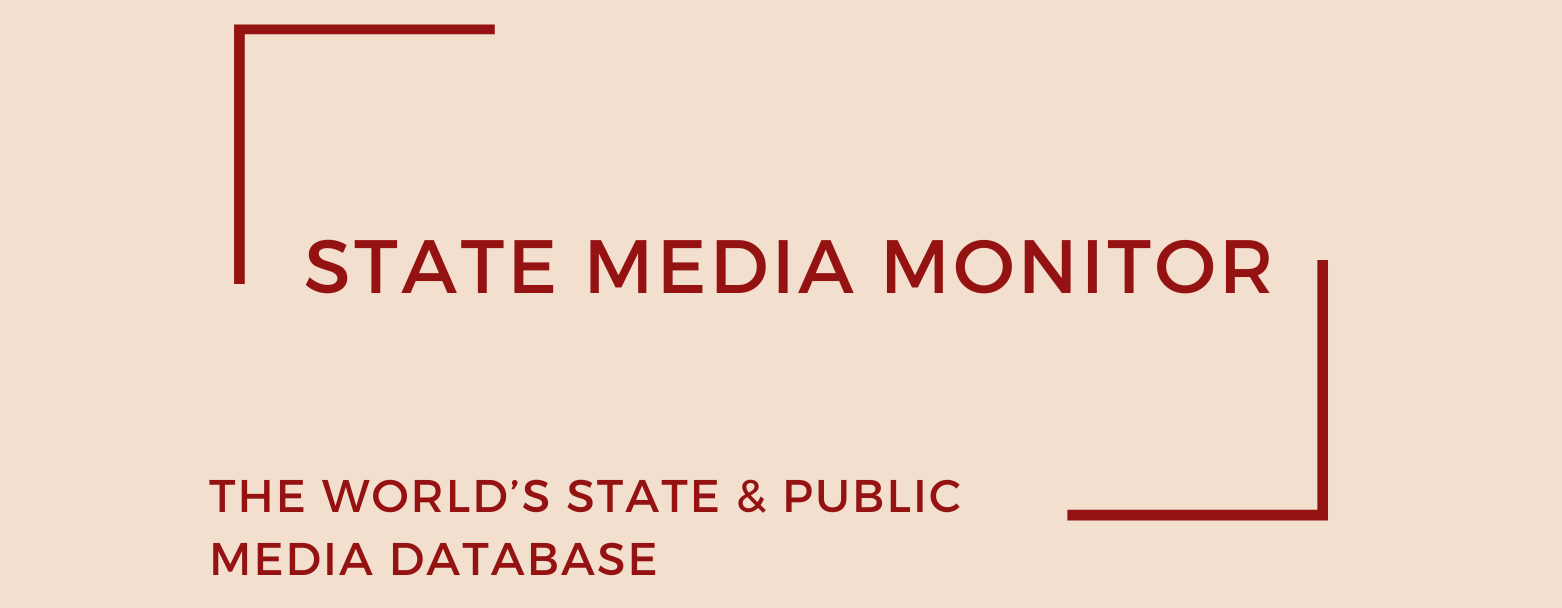Teleradio-Moldova (TRM)
Teleradio-Moldova (TRM) is the state-owned national broadcaster of Moldova. It operates two television channels, Moldova 1 and Moldova 2, alongside three radio services: Radio Moldova, Radio Moldova Tineret, and Radio Moldova Muzical.
Media assets
Television: Moldova 1, Moldova 2
Radio: Radio Moldova, Radio Moldova Tineret, Radio Moldova Muzical
State Media Matrix Typology
Independent State-Funded and State-Managed (ISFM)
Ownership and governance
TRM was created by the Parliament of Moldova and functions under the provisions of the Audiovisual Services Code, the principal legislation regulating the broadcasting sector.
Governance is structured around two bodies. Day-to-day management is handled by the General Director, supported by a team of senior executives. Strategic oversight is exercised by the Supervisory Council (formerly Supervisory and Development Council), whose members were appointed by Parliament until 2025. Between 2019 and 2021, these governance structures briefly operated without parliamentary oversight, a deviation that drew criticism from media watchdogs for undermining accountability.
As of mid-2025, TRM’s General Director is Eugenia Guțu, appointed in 2023. Her leadership has been marked by efforts to modernize programming and expand digital content, while navigating growing political and financial pressures.
The amended Audiovisual Media Services Code, adopted in 2025, fundamentally reshaped the governance of TRM by stripping Parliament of its direct control over the broadcaster’s leadership and supervisory bodies. The reform restored the broadcaster’s oversight body to its original title, the Supervisory Council (CS), expanding its membership from seven to nine and broadening the professional fields of eligibility to include creative industries, democracy and human rights, and minority integration. New eligibility rules require knowledge of media legislation and a clean political record for at least two years. Significantly, responsibility for appointing CS members shifted from Parliament to the Audiovisual Council (CA), which is now obliged to organize open, transparent competitions. Parliament’s previous power to dismiss CS members by rejecting TRM’s annual report was also removed, eliminating a long-standing mechanism of political pressure.
At the same time, the process for appointing TRM’s General Director was overhauled. The CS, not Parliament, now conducts the appointment via a public competition, guided by stricter requirements on education, professional experience, language skills, and political neutrality. The CS must also adopt detailed regulations to ensure merit-based evaluation. Another important safeguard is the abolition of provisions that previously allowed the Director to be dismissed for unsatisfactory performance, rules that had often been exploited to weaken the position’s independence.
As a result of these governance reforms, which render TRM formally independent from a management standpoint, we updated its status in 2025: in our classification system the outlet shifted from the ISFM (Independent State-Funded and State-Managed/Governed Media under management control) category to the ISF (Independent State-Funded) category. This move places TRM one step below the highest tier, Independent Public Media, reflecting its enhanced structural independence while acknowledging that full editorial autonomy is not yet assured in practice.
Source of funding and budget
TRM remains heavily reliant on state funding, with limited scope for commercial revenue. In 2019, the broadcaster’s budget stood at MDL 139.4 million (US$ 8m), 88% of which was government-financed. In 2020, subsidies reached MDL 126.3m (US$ 7m), covering over 92% of the total budget. By 2022, the budget had risen modestly to MDL 144.7m (US$ 7.9m), with 93% provided by the state. In 2023, TRM operated on MDL 162m (US$ 8.9m), with roughly 88% of funds again drawn from the state budget.
In 2024, the allocated budget for TRM was approximately MDL 209 million (US$ 11.7 million), of which MDL 185.7 million (US$ 10.4 million) came from state funding and MDL 24 million (US$ 1.34 million) from its own revenues.
Editorial independence
Legally, TRM enjoys full editorial independence, as enshrined in Article 34 of the Audiovisual Code of Moldova. In practice, however, its autonomy has been the subject of recurrent political debate.
Historically, TRM was regarded as a government mouthpiece, but in the past decade its editorial stance has become noticeably more balanced. Interviews conducted with Moldovan journalists in April 2024 and March 2025 suggested that editorial decision-making is not systematically dictated by politics, even if coverage sometimes appears to favour the governing Party of Action and Solidarity (PAS). The opposition has consistently criticised TRM for allegedly giving disproportionate airtime to PAS leaders and policies, yet independent media analysts acknowledge gradual improvements in balance and professionalism.
The broadcaster has also institutionalized editorial safeguards. An Ombudsman’s Office operates within TRM to evaluate programming, handle viewer complaints, and mediate between the public and management. Annual reports issued by the Ombudsman document cases of editorial missteps and propose corrective measures, an accountability mechanism that has gained credibility in recent years.
August 2025
Citation (cite the article/profile as part of):
Dragomir, M. (2025). State Media Monitor Global Dataset 2025.
Media and Journalism Research Center (MJRC).
Zenodo.
https://doi.org/10.5281/zenodo.17219015
This article/profile is part of the State Media Monitor Global Dataset 2025, a continuously updated dataset published by the Media and Journalism Research Center (MJRC).
